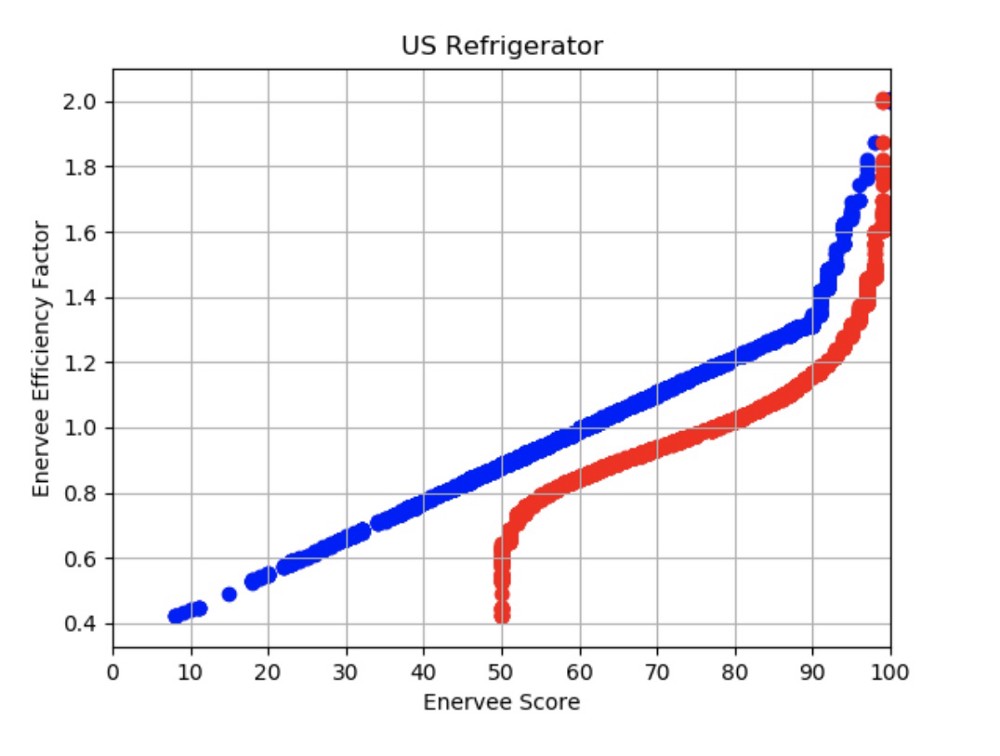The Enervee Score works. It consistently nudges people toward more energy-smart choices. In a series of controlled experiments, exposure to the score led to more efficient product choices—irrespective of motivations, income, stated pro-efficiency attitudes, or political orientation.
That lab finding now holds “in the wild.” An independent review of PG&E’s Marketplace (where the score is a core signal) found that 77% of gross electric savings and 88% of gas savings were attributable to the Marketplace experience beyond any incentives. The Enervee Score—together with personalized, product-specific savings (ClearCost and YouSave)—is information shoppers can’t get elsewhere, and it drives engagement, satisfaction, and measurable savings.
Consumers also want it: in our latest insights, 89% of US shoppers say they want to compare individual products by their specific efficiency before they buy. Energy has become a product feature customers expect.
Why release Enervee Score v2 if it isn’t broken?
Because we need to help more people make more efficient choices, more often. The v1 score was unique and effective—but we saw room to increase representativeness and salience.
Two key upgrades in v2:
- Expanded, more expressive scale. True top performers (90+) are now easier to spot, and the lowest performers can drop further—so high-efficiency models stand out instantly.
- Sharper technology sensitivity. Step-changes in efficiency from newer tech move the score more clearly. Manufacturers that invest in efficiency see a stronger signal—and those who don’t… don’t.

Why the Enervee Score matters
Some utility marketplaces try to improve outcomes by restricting choice to a small list of “approved” efficient products. We take a different path. Reducing the catalog can remove the best models and feels like a step backward for shoppers.
Enervee’s approach is to offer maximum choice (the whole market) and add salient, timely guidance so it’s easy to pick the best option. In academic terms, it’s libertarian paternalism: preserve freedom, nudge better outcomes. The Score—paired with personalized savings—powers our utility marketplaces and choice engines without limiting selection.
With v2, we expect even higher savings and broader adoption. In the PG&E study period, over 10% of 5.2M residential customers used Marketplace, and 60% found it “very helpful.” That’s a strong base to do more—across EE, DR, DER, and EV journeys.
As utilities build integrated customer experiences, engagement matters. 60% of consumers want their utility to guide expanding energy-related choices and behaviors. With the Enervee Score v2 underpinning those decisions, utilities can be more trusted and measurably more impactful.
Enervee Score v2 went live across all utility partners on September 20, 2018.
